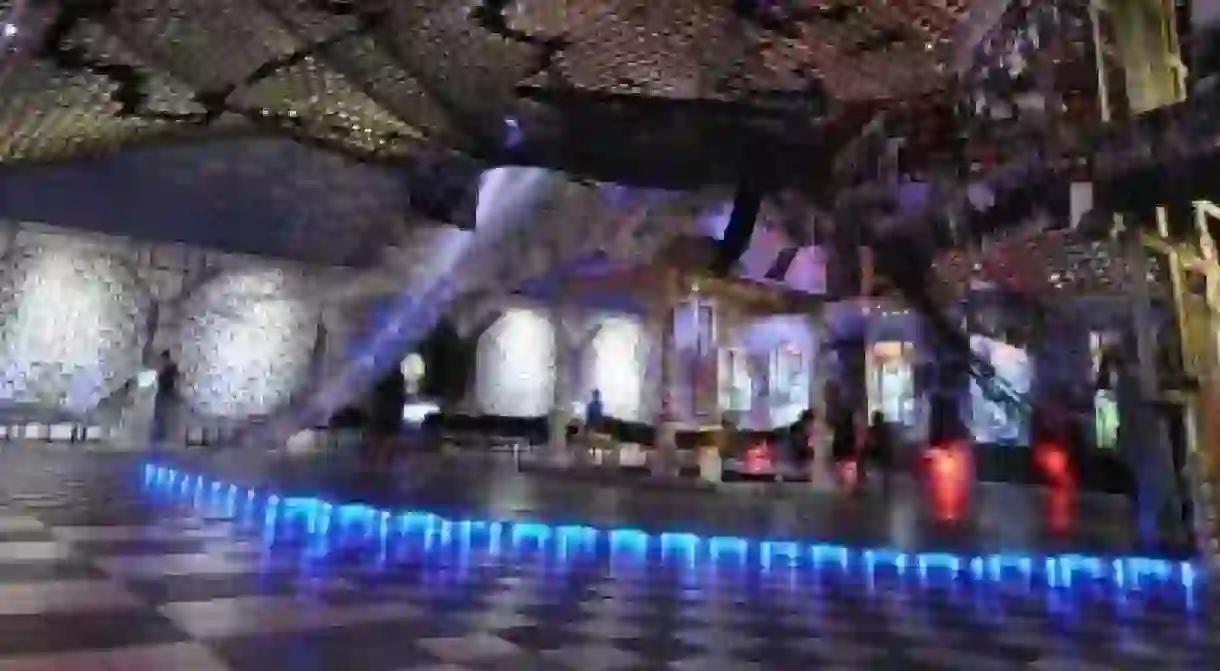Entering the Exclusion Zone At The Ukrainian National Chernobyl Museum

The Chernobyl or ‘Chornobyl’ disaster in 1986 was a catastrophic event, which awakened the world to the potential dangers of nuclear energy and revealed the disastrous effects of a nuclear incident. Kiev’s Ukrainian National Chernobyl Museum recreates the disaster, explaining its causes and devastating consequences as a means of teaching future generations about the risks of nuclear power.

The explosion at Chernobyl Nuclear Power Plant on the 26th of April 1986 was cataclysmic for Ukraine and surrounding countries, having huge political, social and environmental ramifications which are still felt today. The explosion in reactor number four of the Chernobyl plant spread radiation across Europe and the Soviet Union, causing irrevocable damage to the encompassing area, which still remains contaminated with dangerously high levels of radiation. 31 casualties were reported as a direct consequence of the disaster and it has been estimated that tens of thousands more will die of cancer due to radiation exposure. The Chernobyl disaster offered a terrifying vision of nuclear apocalypse and revealed to the world the uncertainty and danger of the Soviet energy policy. The fact that the disaster was kept a secret from the outside world for several days, and was only publicly acknowledged after radiation had been detected in Sweden, was a devastating indictment of the secrecy of the Soviet leadership and contributed to the Soviet Union’s eventual downfall.

The Ukrainian National Chernobyl Museum attempts to come to grips with the magnitude of this disaster and offers an educational yet deeply moving experience. It is a disturbing reminder of the catastrophic effects of a nuclear disaster and grants a grim insight into what happened at the Chernobyl Nuclear Power Plant on the 26th of April 1986. Located in Kiev rather than the now deserted Exclusion Zone around Chernobyl, the museums allows visitors to experience what it was like inside the power plant during the explosion and subsequent breakdown. The calamitous errors which led to the disaster are laid out, as are the efforts to contain the disaster and the immense radioactive leak which followed. The museum includes an array of artifacts from within the power station including safety gear, technical equipment, and even the rescue vehicles which were sent into Chernobyl to assist with the disaster. It also houses a diorama of the exploded reactor which, despite looking like something out of a secondary school project, serves to illustrate what exactly happened.
The disturbing effect of the radioactivity is underlined by the number of personal items taken from workers within the power station who fled the disaster, and from those who lived in the surrounding area and were forced to flee their homes. Images of the actual side effects caused by the disaster are a gruesome reminder of the effects of radiation, and the risks still posed by the leak, even over two decades after the initial explosion. Pictures of children who were forced to relocate and still face the risks of developing cancer and other medical conditions are another emotive reminder of the devastating effects this disaster had. A melancholy but surreal touch is added by a symbolic memorial to the children of Chernobyl, which includes a tree growing through a baby’s cot submerged in a spooky purple light. The museum also honors the selfless work of those who fought to contain the disaster and worked on clean-up projects for many years after the initial explosion.

Whilst the political consequences of the Chernobyl disaster were profound, it was the surrounding area which suffered the most calamitous effects of the disaster. Belarus and Russia are still engaged in costly clean-up and containment exercises, whilst Ukraine has felt the brunt of the disaster, both in terms of the human cost and the debilitating effect on infrastructure. The city of Pripyat, the nearest urban center to the power plant, is now a ghost town despite housing a population of almost 50,000 before the disaster struck. The area around the power plant itself is of course now known as the Exclusion Zone. Despite the dangers of venturing into Pripyat and the disaster zone, it is actually possible to join government-run tours of the area, for example, the Chernobyl Power Plant from Tour Kiev, which intends on educating visitors about the actual effects of a nuclear incident. The area, however, holds its name for a reason, and visitors must remain on the routes mapped out by tour guides to avoid entering a radiation hot spot. Visitors can experience the ghostly abandoned city of Pripyat, which is frozen in a Soviet past and is surreal and ghostly evidence of the magnitude of the disaster.
The 2011 explosion at Fukushima in Japan has given extra resonance to Chernobyl and an added imperative to learn about the risks of nuclear incidents, which for the affected local areas lingers far into the future.
The Ukrainian National Chernobyl Museum, Kyiv Khoryv Lane, 1, (Metro – Kontraktova Plosha), tel. 0038 (044) 417-54-22.













